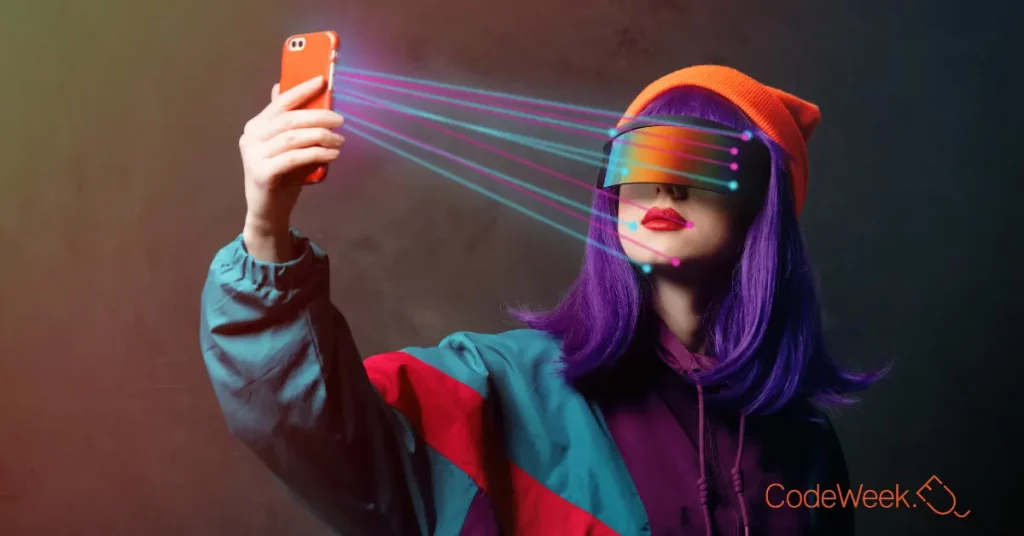Behind the seams — the impact of coding on the fashion industry
13/09/24
The fashion industry has had a serious tech makeover in recent years. Today, it’s not just about fabrics and flair — coding and technology are now part of the very fabric of fashion, revolutionising everything from design sketches to the runway. From the earliest stitches of innovation to the latest threads of digital development, coding is now a must-have accessory in the world of style.
The history of coding in fashion
The relationship between coding and fashion began modestly, with early innovations in textile manufacturing. The first significant development was the 19th-century invention of the Jacquard loom, which used punch cards to control the weaving of complex patterns — a primitive precursor to computer programming. This enabled the automatic production of intricate designs, laying the groundwork for future technological advancements in fashion.
The next significant leap was the advent of computers in the mid-20th century. Initially, computers were used to manage inventory and streamline production. However, as software development evolved, fashion designers began to see the potential for using coding in the creative process itself. By the 1980s and 1990s, computer-aided design (CAD) software became a standard tool in the industry, allowing designers to create, modify and visualise their designs digitally. This greatly accelerated the design process and also opened up new possibilities for innovation.
Revolutionary developments in fashion through coding
One of the most revolutionary coding developments in fashion is the rise of 3D printing. This technology, which translates digital designs into physical objects, has allowed designers to create intricate, customised garments and accessories that would be impossible to produce using traditional methods. Brands like Iris van Herpen have pioneered this technology in haute couture, pushing the boundaries of what is possible in fashion.
Another significant development is the use of algorithms and artificial intelligence (AI) in trend forecasting. In the past, predicting fashion trends relied heavily on intuition and manual market research. Today, companies like Heuritech use AI to analyse vast amounts of data from social media, eCommerce platforms and fashion shows to predict trends with remarkable accuracy. Brands can now make more informed decisions about what to produce, reducing waste and increasing profitability.
Main uses of coding in the fashion industry
Coding is now used extensively across various aspects of the fashion industry. Some of the primary applications include:
- Design and prototyping: Designers use CAD software to create and iterate on designs quickly. 3D modelling allows for the virtual fitting of garments, reducing the need for physical samples and speeding up the design process.
- Supply chain management: Coding enables more efficient management of the fashion supply chain. Algorithms optimise everything from raw material sourcing to production schedules and logistics, so products are delivered on time and at the right cost.
- ECommerce and personalisation: Online retail platforms use complex algorithms to personalise the shopping experience. From recommending products based on browsing history to offering dynamic pricing, coding plays a crucial role in enhancing the customer experience.
- Sustainability initiatives: Coding is also used in sustainability efforts, such as tracking the environmental impact of production processes or optimising the use of resources. This can include anything from energy-efficient manufacturing to waste-reduction strategies.
Balancing tech innovation with ethics
As coding becomes increasingly integral to fashion, a few wrinkles need to be ironed out. As with all digital or automated processes, traditionalists are concerned that craft and handmade quality may be lost to algorithms and mass production. Additionally, the rise of fast fashion, fuelled by rapid production cycles, has exacerbated environmental issues, contributing to waste and pollution.
And as fashion becomes more intertwined with technology, smaller, independent designers may struggle to compete with larger brands with resources to invest in advanced technology, resulting in less diversity. It’s essential to address these concerns to ensure the industry remains both innovative and ethical.
The future of coding in the fashion industry
As technology continues to evolve, the role of coding in fashion will only expand. One area poised for significant growth is the development of smart textiles — fabrics embedded with sensors and electronics that can interact with the wearer or environment. These textiles could monitor health, adjust to temperature changes, or even charge electronic devices.
Additionally, virtual and augmented reality (VR/AR) are set to transform the fashion shopping experience. Virtual try-ons and immersive fashion shows are just the beginning of how these technologies will redefine consumer interaction with fashion.
As we look to the future, the continued fusion of fashion and technology promises to bring even more exciting innovations. Let’s hope we can harness these advances to foster a more efficient, creative and sustainable industry.



